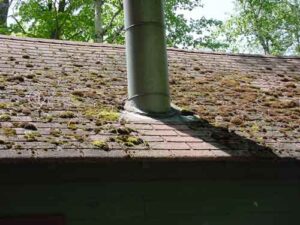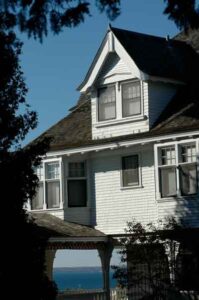How do you know what to watch for when buying a house? It’s a question that not enough people ask themselves properly, especially as they’re dealing with the fact that buying a house is usually a lot of work.
You’ll often have to wade through dozens of seemingly bad places offered at high prices and still get no closer to a purchase. The process is often tiring, discouraging and you’ll typically be making a big decision with limited knowledge.
4 key things to know when buying a house
One thing you can do is arm yourself with technical insights that let you discern between deal-breaking problems and deficiencies you can fix. It’s always wise to get the opinion of an accredited home inspector before any actual purchase, but before that happens you’ll need to separate the good, the bad and the ugly.
Besides the obvious considerations about appearance, location and price, there are four important technical issues to consider. The thing is, as important as these are, it’s also easy to overlook them as you shop.
No. 1: How’s the roof?
 About 75 per cent of roofs in North America are covered in asphalt shingles. Assessing their condition is easy.
About 75 per cent of roofs in North America are covered in asphalt shingles. Assessing their condition is easy.
If shingles look curly and rough from where you stand on the ground, they are bad. If shingles are universally flat and clean looking, they’re good. This isn’t brain surgery. And while it’s possible that a roof with good shingles can still leak, this is rare.
A new asphalt roof for most homes costs at least $10,000, and every new home will need one from time to time. That’s why a bad roof should never be a deal breaker on its own. The question really is do you want to pay for a new roof now? Consider the cost of a replacement roof as you shop and as you make an offer on the place.
No. 2: Is the basement wet?
Not all homes have a basement, but if the place you’re considering has one, you need to pay attention.
Wet basements are tricky on two counts. First, basement water leaks can be hard to spot during dry weather. Second, fixing a wet basement can easily cost $10,000 to $30,000 or more, plus a lot of disruption to your yard and your life.
Also, some basement leaks can never be fixed reliably because of a high water table or other site issues. Do you see brown, dry water marks on wood or stored items in the basement? Are boxes and shelves strategically raised up off the floor?
Wet basements usually show tell-tale signs, but you need to pay attention. A little suspicion is a good thing when it comes to assessing how dry a basement is. Don’t let hope and smiling assurances from real estate agents calm your suspicions.
If a basement looks like it has leaked, it’ll almost certainly leak at least somewhat regularly. Why does this matter? Two reasons.
A wet basement should never be finished into living space, and a wet basement can lead to indoor air quality problems throughout the whole house. Mould needs moisture to grow, and a wet basement can offer that moisture. Even a basement that only gets damp in the summer should never have cardboard boxes or any kind of wood or cloth on the basement floor.
No. 3: How energy efficient is this place?
Energy efficiency often boils down to the age of the home. Houses built 30 or 40 years ago will probably cost more to heat and cool than a house built today, most things being equal.
Unmodified houses built before the Second World War are absolutely primitive energy-wise. I love the charm of many older homes, but recognize that efficiency problems in heritage homes always extend right down to the design level.
Even fully retrofitted, expect an old house to consume at least twice as much energy as a leading-edge home built to today’s typical standards per square foot.
There’s another issue, too. Homes built to the standards that were current even a few years ago could use 20 to 30 per cent more energy than homes built to standards that have kicked in since then.
No. 4: How are the windows?
 Windows are like roofs. They’re a normal wear item in any home. Eventually, all windows need to be replaced. Ratty old peeling windows look terrible, but replacement is not that big a deal.
Windows are like roofs. They’re a normal wear item in any home. Eventually, all windows need to be replaced. Ratty old peeling windows look terrible, but replacement is not that big a deal.
Obviously, bad windows may actually be a good thing if they scare away buyers, letting the price settle lower. New windows for an average home can cost $10,000 and up, so figure that in to your offer.
And when it comes time to replace windows, check out Window Wise. It’s a free quality assurance program that offers certification of window installers and technical assessment of window products.
There are many things that can be wrong with a home, and the information here is no substitute for a proper inspection completed by a properly accredited home inspector. But still, ordinary people can make reasonable assessments of things like the roof, windows, age and condition of the basement.
Houses aren’t as complicated as they seem. Specific bits of hands-on insight translate into a surprising amount of confidence when it comes time to make an offer. A little technical knowledge goes a long way.
Originally published Nov. 24, 2018






